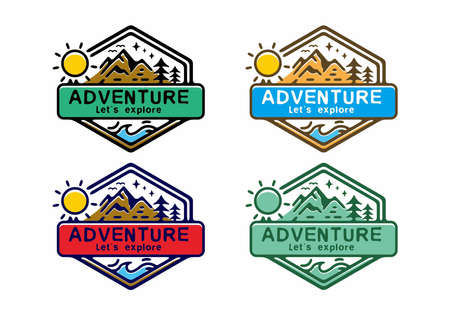1. Why a Reliable GPS Device Matters for Hikers in the US
When it comes to hiking in the United States, there’s no shortage of breathtaking views and vast wilderness to explore. From the rugged peaks of the Rockies to the deep forests of the Pacific Northwest, American landscapes are as diverse as they are expansive. But with all this beauty comes unique challenges—navigating national parks, remote backcountry trails, or even local state forests can quickly become overwhelming without proper navigation tools.
The Scale and Diversity of American Trails
The US is home to thousands of miles of marked and unmarked trails. Whether you’re trekking through Yellowstone National Park or venturing off-grid in Alaska, trail conditions can change quickly. Weather shifts, unclear signage, and dense woods can make even experienced hikers lose their bearings. A reliable GPS device can help you track your route, mark waypoints, and find your way back if you stray off course.
Common Navigation Challenges Faced by US Hikers
| Challenge | Description | Why GPS Helps |
|---|---|---|
| Vast Wilderness Areas | Remote regions with few landmarks | Pinpoints exact location & tracks movement |
| Poor Cell Service | No signal in many parks & forests | Dedicated GPS works offline, unlike smartphones |
| Changing Weather | Fog, snow, or storms reduce visibility | Keeps you on course when you cant see trail markers |
| Complex Trail Networks | Intersecting paths can be confusing | Shows mapped routes and helps avoid wrong turns |
| Emergencies & Safety | Injuries or getting lost far from help | Many devices offer SOS features and location sharing |
National Parks: Big Adventures, Bigger Risks
America’s national parks are world-renowned for their size and wildness. Places like Yosemite, Grand Canyon, or Great Smoky Mountains National Park attract millions each year—but search and rescue teams respond to hundreds of lost hiker cases annually. In these massive spaces, a dependable GPS device isn’t just convenient—it could be a lifesaver.
Key Benefits of Reliable GPS Devices for US Hikers:
- Peace of Mind: Know your exact position anytime, anywhere.
- Route Planning: Download detailed maps before heading out.
- SOS Alerts: Send emergency signals when cell phones fail.
- Battery Life: Designed for long trips—unlike most smartphones.
- User-Friendly: Many models feature simple controls made for outdoor use.
If you love exploring America’s great outdoors, investing in a solid GPS device is one of the smartest moves you can make for your safety and adventure enjoyment.
2. Key Features to Look for in a Hiking GPS
Choosing the right GPS device is essential for hiking safely and confidently across America’s diverse landscapes. Here’s a breakdown of the most important features you should consider before making your pick.
Battery Life
Long hikes or backcountry trips demand a GPS unit that can last for days without needing a recharge. Look for devices with extended battery life, options for AA or AAA batteries, and energy-saving modes. Here’s a quick comparison:
| Battery Type | Average Battery Life | Best For |
|---|---|---|
| Rechargeable Lithium-ion | 10-25 hours | Day hikes, short trips |
| AA/AAA Replaceable | 20-40 hours (with spares) | Multi-day/backcountry treks |
| Solar Assist | Varies (extends charge) | Desert/sunny climates |
Weather Resistance
Your GPS needs to handle rain, snow, dust, and the occasional accidental drop. In the US, hiking conditions can change quickly, so check for waterproof ratings like IPX7 or higher and rugged construction designed for outdoor use.
Topographic Mapping Capabilities
A hiking GPS should offer detailed topographic maps so you can see elevation changes, terrain types, and trail routes at a glance. Many devices come preloaded with basic maps, but look for those that allow downloading or upgrading to more detailed US-specific maps.
USGS Map Integration
If you’re hiking in the US, integration with USGS (United States Geological Survey) maps is a game changer. These official maps provide highly accurate information on trails, landmarks, water sources, and elevation contours—key details for navigating America’s national parks and wilderness areas.
Ease of Use
No one wants to fumble with tiny buttons or complicated menus while on the trail. Prioritize devices with:
- User-friendly interfaces (touchscreens or intuitive button layouts)
- Clear display readable in bright sunlight or low light conditions
- Straightforward menu navigation so you can mark waypoints or retrace your steps easily
US-Specific Compatibility Features
The best GPS units for American hikers often include extras tailored to local needs:
- Compatibility with National Park Service trail data and boundary overlays
- Caching satellite maps for offline use in remote US regions
- Emergency SOS functions compatible with US search-and-rescue systems (like Garmin’s inReach satellites)
- Bilingual English/Spanish language support for broader accessibility
![]()
3. Top GPS Devices for Hiking in the US
When it comes to hiking in the United States, having a reliable GPS device can make all the difference. The American outdoors offer everything from well-marked national park trails to backcountry adventures where cell service is non-existent. Here’s a look at some of the most popular GPS units among US hikers, focusing on brands that are known for accuracy, ruggedness, and features that cater to American trails and mapping systems.
Leading Hiking GPS Brands in the US
Three main brands dominate the US hiking GPS scene: Garmin, Magellan, and Suunto. These companies have earned their reputation by providing devices that withstand tough conditions and offer precise navigation tailored for American landscapes.
Comparison Table: Popular Hiking GPS Devices
| Brand & Model | Main Features | Battery Life | US Trail Support | Price Range (USD) |
|---|---|---|---|---|
| Garmin GPSMAP 66i | Satellite messaging, topo maps, weather alerts, rugged build | Up to 35 hours (with tracking) | Excellent (preloaded USGS topo maps, direct trail downloads) | $450–$500 |
| Garmin eTrex 32x | Compact design, color display, multiple satellite networks | Up to 25 hours | Very good (supports US trails and waypoints) | $250–$300 |
| Magellan eXplorist 310 | User-friendly interface, waterproof, preloaded maps | Up to 18 hours | Good (compatible with National Geographic TOPO! maps) | $150–$200 |
| Suunto Traverse Alpha | GPS/GLONASS navigation, hunting/fishing modes, durable case | Up to 100 hours (in GPS mode) | Good (topo map support for US regions) | $350–$400 |
| Garmin inReach Mini 2 | Satellite communication, SOS features, compact size | Up to 14 days (tracking mode) | Excellent (works with US mapping apps like Gaia GPS) | $400–$450 |
What Makes These Devices Stand Out?
Toughness: All these models are built for rough terrain and unpredictable weather—think rainstorms in the Rockies or dust on desert trails.
User-Friendly Features: From easy-to-read screens to intuitive controls, these devices are designed so you can focus on your hike instead of fiddling with tech.
Trail Compatibility: Many come preloaded with USGS topo maps or sync easily with popular American trail apps like AllTrails or Gaia GPS.
A Quick Note on Satellite Communication Devices
If you’re planning trips into remote wilderness areas where help may be far away, consider a unit with satellite messaging or SOS features like the Garmin inReach series. These devices let you stay connected even when you’re off the grid.
No matter which device you choose, make sure it fits your needs—whether that’s long battery life for multi-day hikes or detailed mapping for exploring lesser-known American trails.
4. Comparing Smartphone Apps vs. Dedicated GPS Devices
When it comes to hiking in the US, choosing between a smartphone GPS app and a dedicated GPS device can make a big difference in your outdoor experience. Both options have their strengths and weaknesses, especially when you’re deep in the backcountry or exploring national parks like Yosemite or the Rockies. Let’s break down how they stack up in real-world hiking scenarios.
Smartphone GPS Apps
Most hikers already carry smartphones, making GPS apps like Gaia GPS, AllTrails, and OnX Backcountry super convenient. They’re easy to use and often come loaded with helpful features like offline maps, trail reviews, and weather updates.
Pros of Smartphone GPS Apps
- Convenience: You probably already have your phone with you.
- User-friendly interfaces: Most apps are intuitive and quick to learn.
- Multi-use device: Navigation, camera, emergency calls—all in one.
- Access to updated maps and user data: Download routes and recent trail reports before you go.
Cons of Smartphone GPS Apps
- Battery life: Using GPS drains phone batteries fast, especially in cold weather or remote areas where cell service is spotty.
- Durability: Phones can be fragile; water, drops, or extreme temps can damage them easily.
- No signal needed for GPS location but maps must be downloaded ahead of time: If you forget to download offline maps, you could get lost without service.
- No dedicated SOS function: Most phones don’t have built-in satellite messaging for emergencies (unless paired with separate devices).
Dedicated GPS Devices
Standalone GPS units like Garmin’s GPSMAP series or the Garmin inReach are designed specifically for outdoor navigation. These devices are popular among serious backpackers, thru-hikers on the Pacific Crest Trail, and anyone who ventures far from civilization.
Pros of Dedicated GPS Devices
- Long battery life: Many models last for days on a single set of AA batteries or a charge.
- Tough build: Waterproof and rugged—built to handle drops, rain, snow, and mud.
- SOS & satellite messaging: Some models include emergency communication even when there’s no cell service (key for remote areas).
- Bigger buttons & screens optimized for gloves/weather: Easier to use in harsh conditions compared to touchscreens.
Cons of Dedicated GPS Devices
- Bigger investment: Can be pricey upfront compared to free or low-cost apps.
- Larger and heavier: Adds weight and bulk to your pack (though many models are still compact).
- User interface is less modern: Menus can feel clunky compared to slick smartphone apps.
- You still need your phone for photos/communication: Not an all-in-one solution unless you get a model with texting/SOS functions.
Side-by-Side Comparison: Real-World Hiking Scenarios
| Smartphone Apps | Dedicated GPS Devices | |
|---|---|---|
| Batteries Last Long? | No — may need extra power bank | Yes — up to several days per charge/batteries |
| Drops/Waterproof? | No — most phones aren’t ruggedized | Yes — designed for tough conditions |
| SOS/Emergency Messaging? | No — unless paired with special devices | Yes — available on many models (e.g., Garmin inReach) |
| User-Friendly Maps/Interface? | Yes — modern touchscreens/apps | No — older-style menus/buttons |
| Total Weight/Bulk? | Lighter — just your phone | A bit heavier (extra device) |
| Crowdsourced Trail Data? | Yes — user reviews/photos/trail updates | No — relies on preloaded map data only |
| No Cell Service Needed? | If you pre-download maps only | Yes — full functionality anywhere outdoors |
| Main Use Case Example (US) | Casual day hikes near populated areas/national park trails with good signage | Multi-day backpacking trips in remote wilderness where help is far away (e.g., Grand Canyon Rim-to-Rim, Alaska backcountry) |
The Bottom Line on Choosing Between Them
Your choice depends on the type of hiking you do most often. For casual hikes near cities or well-traveled US trails, a smartphone app might be all you need. But if you’re heading into remote American wilderness or planning multi-day adventures where safety is critical and conditions are rough, investing in a dedicated GPS unit can offer peace of mind and extra security.
5. Tips for Getting the Most Out of Your GPS in the US Outdoors
Practical Field Use: Make Your GPS Work for You
When you’re hiking in the US, your GPS device is more than just a gadget—it’s your lifeline to navigation and safety. Here are some easy-to-follow tips to help you get the most out of your GPS while exploring America’s great outdoors:
1. Get Familiar Before You Go
Before hitting the trail, spend time with your GPS at home. Learn how to mark waypoints, follow routes, and read the map display. Practice using key features like “track back” or creating custom routes.
2. Maximize Battery Life
Battery life is crucial on long hikes. Here’s a handy table with top battery-saving tips:
| Tip | How It Helps |
|---|---|
| Lower screen brightness | Reduces power drain significantly |
| Use battery saver mode | Puts device in low-power state between updates |
| Turn off Bluetooth/Wi-Fi | Saves energy if not syncing data in real-time |
| Carry spare batteries/power bank | Keeps you powered up for multi-day trips |
| Pre-load maps and trails | Cuts down on live data use that drains battery |
3. Download US Trail Maps Beforehand
The US has thousands of trails—download maps for your region before heading out. Use platforms like Gaia GPS, AllTrails, or Garmin Explore to pre-load trail maps and public lands layers so they’re available offline when cell signal drops out.
Popular US Map Sources for Hikers:
- USGS Topo Maps: Great for detailed terrain info across all states.
- National Park Service (NPS) Maps: Perfect for national parks and monuments.
- State Park Websites: Many offer downloadable PDF or GPX trail maps.
- Crowdsourced Apps: Platforms like AllTrails offer real hiker reviews and route updates.
4. Integrate Your GPS with Other Safety Tools
Your GPS works even better when paired with other backcountry tools:
- PLBs & Satellite Messengers: Devices like Garmin inReach let you send SOS signals or text family even off-grid.
- Papers Maps & Compass: Always carry them as backup—electronics can fail.
- Mobile Apps: Sync your GPS tracks with apps on your phone for sharing routes or checking weather updates.
- Trekking Poles with Mounts: Attach your GPS to a pole for hands-free navigation on rough terrain.
A Few More Quick Tips
- Calibrate regularly: Make sure your compass and altimeter are accurate before every trip.
- Create custom waypoints: Mark water sources, campsites, or junctions as you go.
- Name your tracks clearly: Use names like “Yosemite Loop June 2024” so you remember where you’ve been.
- Share your location: Let a friend or family member know your planned route and check-in points, especially when hiking solo in remote US areas.
The right preparation and smart field habits ensure your GPS becomes an indispensable partner on every hike across America’s diverse landscapes!


